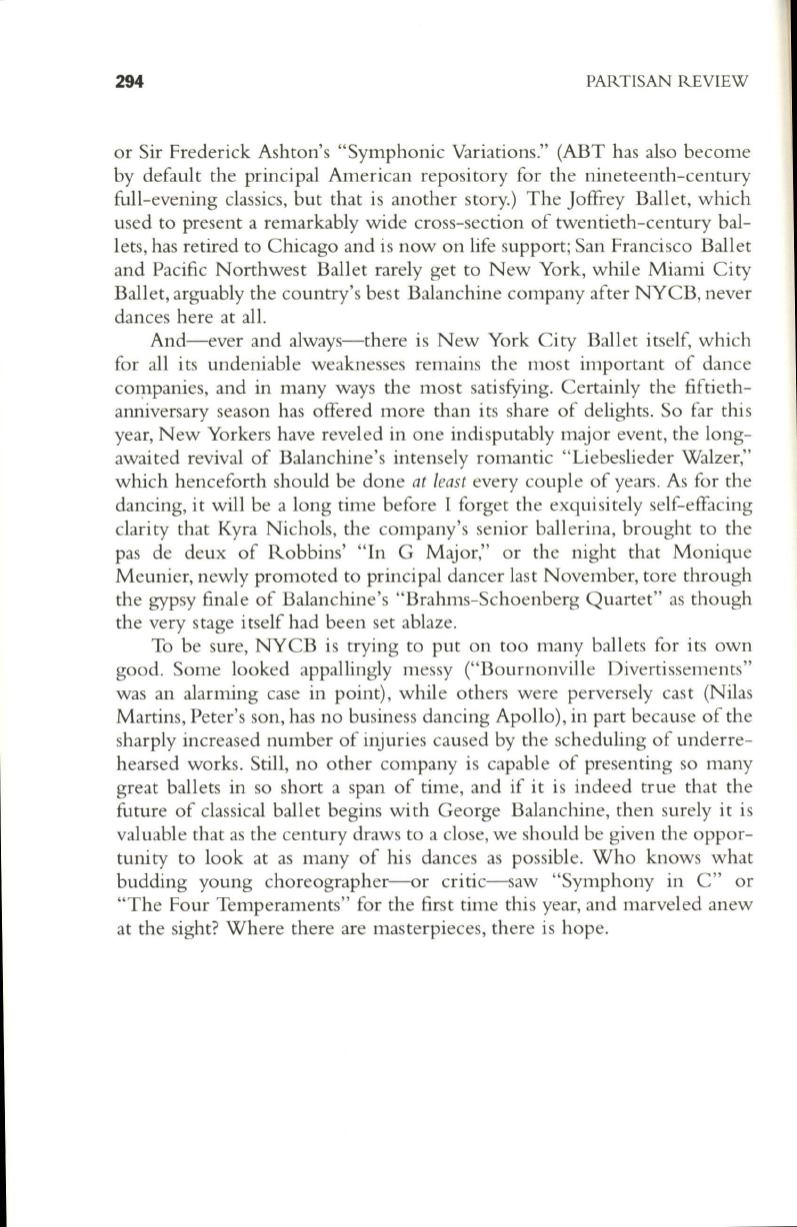
294
PARTISAN REVIEW
or Sir Frederick Ashton's "Symphonic Variations." (ABT has also become
by default the principal American repository for the nineteenth-century
full-evening classics, but that is another story.) The Joffrey Ballet, which
used to present a remarkably wide cross-section of twentieth-century bal–
lets, has retired to Chicago and is now on life support; San Francisco Ballet
and Pacific Northwest Ballet rarely get to New York, while Miami City
Ballet, arguably the country's best Balanchine company after NYCB, never
dances here at all.
And-ever and always-there is New York City Ballet itself, which
for all its undeniable weaknesses remains the most important of dance
cOf!1panies, and in many ways the most satisfYing. Certainly the fiftieth–
anniversary season has offered more than its share of delights. So far this
year, New Yorkers have reveled in one indisputably major event, the long–
awaited revival of Balanchine's intensely romantic "Liebeslieder Walzer,"
which henceforth should be done
at least
every couple of years. As for the
dancing, it will be a long time before I forget the exquisitely self-effacing
clarity that Kyra Nichols, the company's senior ballerina, brought to the
pas de deux of Robbins' "In G Major," or the night that Monique
Meunier, newly promoted to principal dancer last November, tore through
the gypsy finale of Balanchine's "Brahms-Schoenberg Quartet" as though
the very stage itself had been set ablaze.
To be sure, NYCB is trying to put on too many ballets for its own
good. Some looked appallingly messy ("Bournonville Divertissements"
was an alarming case in point), while others were perversely cast (Nilas
Martins, Peter's son, has no business dancing Apollo), in part because of the
sharply increased number of injuries caused by the scheduling of underre–
hearsed works. Still, no other company is capable of presenting so many
great ballets in so short a span of time, and if it is indeed true that the
future of classical ballet begins with George Balanchine, then surely it is
valuable that as the century draws to a close, we should be given the oppor–
tunity to look at as many of his dances as possible. Who knows what
budding young choreographer-or critic-saw "Symphony in C" or
"The Four Temperaments" for the first time this year, and marveled anew
at the sight? Where there are masterpieces, there is hope.


